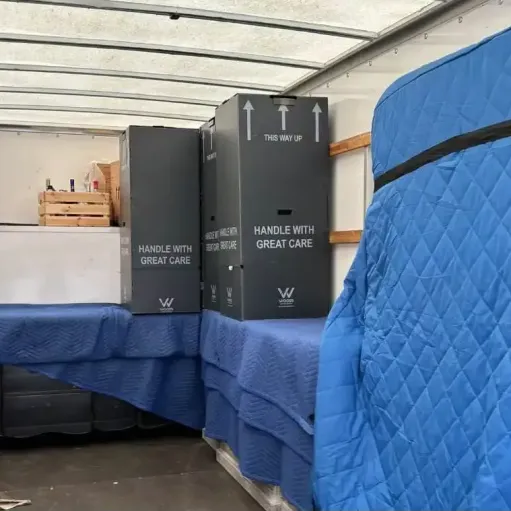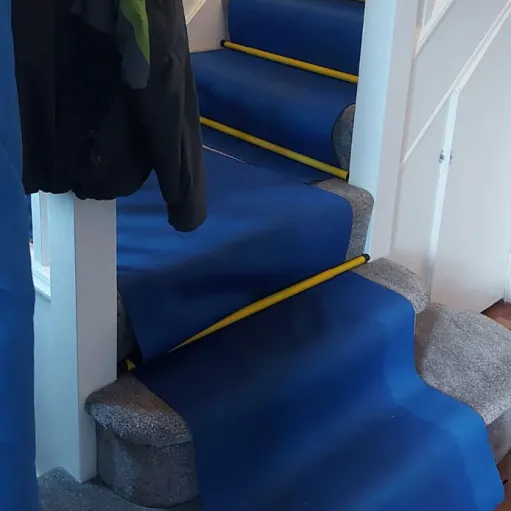Your Trusted Local Removals Company


Simplifying Your Home Move
Our experienced team will:
- Visit your home for a thorough assessment
- Carefully load all your belongings
- Safely transport your items to your new location
- Ensure timely delivery and placement of your goods
We're committed to making your move as smooth and stress-free as possible. Get in touch with our team today to learn more about how we can help with your Wirral home move.




Our Comprehensive Home Removal Services
- Full Home Relocations: Complete moving service for any size property
- Professional Packing: Expert packing using high-quality materials
- Furniture Assembly: Complete disassembly and reassembly services
- Secure Storage: Flexible storage solutions for short-term and long-term needs


Wirral's Premier Home Removal Service
- Local Knowledge: Our team knows Wirral inside out, ensuring efficient routes and smooth moves.
- Experienced Professionals: With over 10 years in the industry, we have the expertise to handle any moving challenge.
- Tailored Approach: We customize our services to meet your specific needs and preferences.
- Comprehensive Coverage: We serve all areas of Wirral, from Birkenhead to West Kirby and everywhere in between.
- Competitive Pricing: Fair rates without compromising on the quality of our services.
- Full Insurance: Your belongings are protected throughout the entire moving process.



Make Your Wirral Home Move Easier
- Start decluttering early to reduce the volume of items you need to move
- Label your boxes clearly with contents and destination room
- Pack a 'first night' box with essentials you'll need immediately in your new home
- Notify important parties of your change of address, including setting up mail forwarding
- Take meter readings at both properties on moving day
- Consider our professional packing service to save time and ensure maximum protection for your belongings
Let Gibbons Removals take the stress out of your Wirral home move. Contact us today to discuss how we can make your relocation smooth and efficient.
Frequently Asked Questions
Common questions about our removal services and moving process
How much do house removals cost with Gibbons Removals?
Our removal costs depend on property size, distance, and services required. We provide competitive pricing across Wirral, Liverpool, Chester and North Wales, typically ranging from £400-£1,500 for local moves. We offer free home surveys to provide accurate, no-obligation quotes tailored to your specific needs with no hidden fees.
What areas do Gibbons Removals cover?
We provide removal services throughout Wirral, Liverpool, Chester, Cheshire, and North Wales. Our experienced local team knows these areas well and offers daily services across the North West region. We also handle nationwide UK moves and can arrange European relocations when required.
How far in advance should I book with Gibbons Removals?
We recommend booking 4-6 weeks in advance, especially during busy periods like summer months and end-of-month dates. However, we understand that sometimes moves come up quickly, so we always try our best to accommodate urgent bookings when possible.
Are Gibbons Removals fully insured?
Yes, we are fully insured with comprehensive coverage for goods in transit and public liability. Our insurance protects your belongings from collection to delivery, and we provide clear documentation. We take great care with every item, but our insurance gives you complete peace of mind.
What makes Gibbons Removals different from other moving companies?
We're a local business with over 10 years of experience and 200+ five-star reviews. Our team knows the North West intimately, we offer transparent pricing with no hidden costs, and we provide a complete range of services from packing to storage. Most importantly, we treat every move with personal care and attention.
 75+ ⭐⭐⭐⭐⭐
75+ ⭐⭐⭐⭐⭐
 30+ ⭐⭐⭐⭐⭐
30+ ⭐⭐⭐⭐⭐
 35+ ⭐⭐⭐⭐⭐
35+ ⭐⭐⭐⭐⭐
 5+ ⭐⭐⭐⭐⭐
5+ ⭐⭐⭐⭐⭐